Personal protective equipment (PPE) is the last line of defense between you and the hazards present in your workplace.
PPE is all clothing and equipment designed to keep hazards that can’t be eliminated from coming into contact with you or to minimize the impact when the hazard is encountered. All PPE necessary for your job will be provided to you at no cost. It is your responsibility to wear your PPE when it is needed.
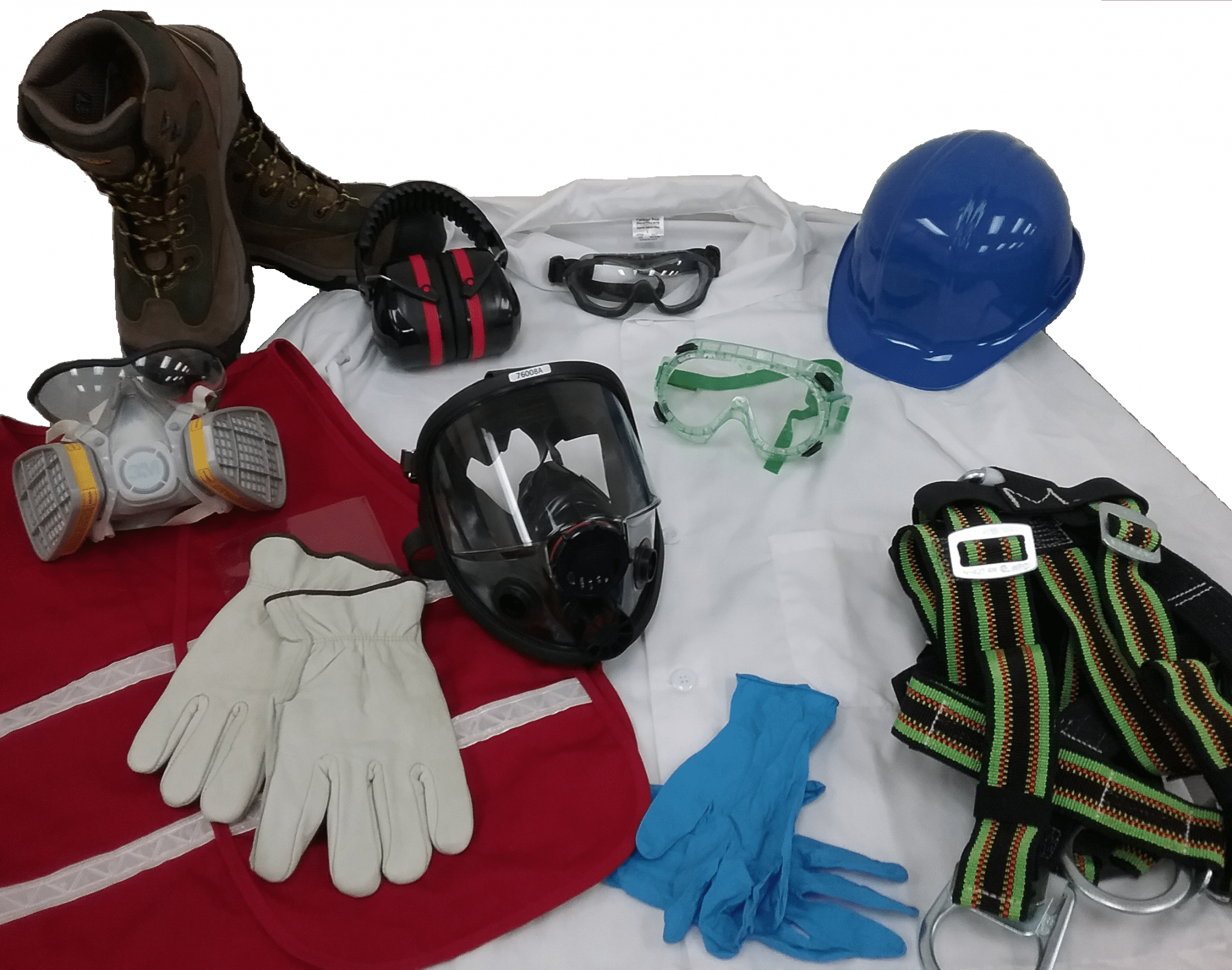
Personal protective equipment (PPE) is the last line of defense between you and the hazards present in your workplace.
PPE is all clothing and equipment designed to keep hazards that can’t be eliminated from coming into contact with you or to minimize the impact when the hazard is encountered. All PPE necessary for your job will be provided to you at no cost. It is your responsibility to wear your PPE when it is needed.
Arc Flash PPE is discussed on the Electrical Safety page and is not covered in this section.
Head Protection
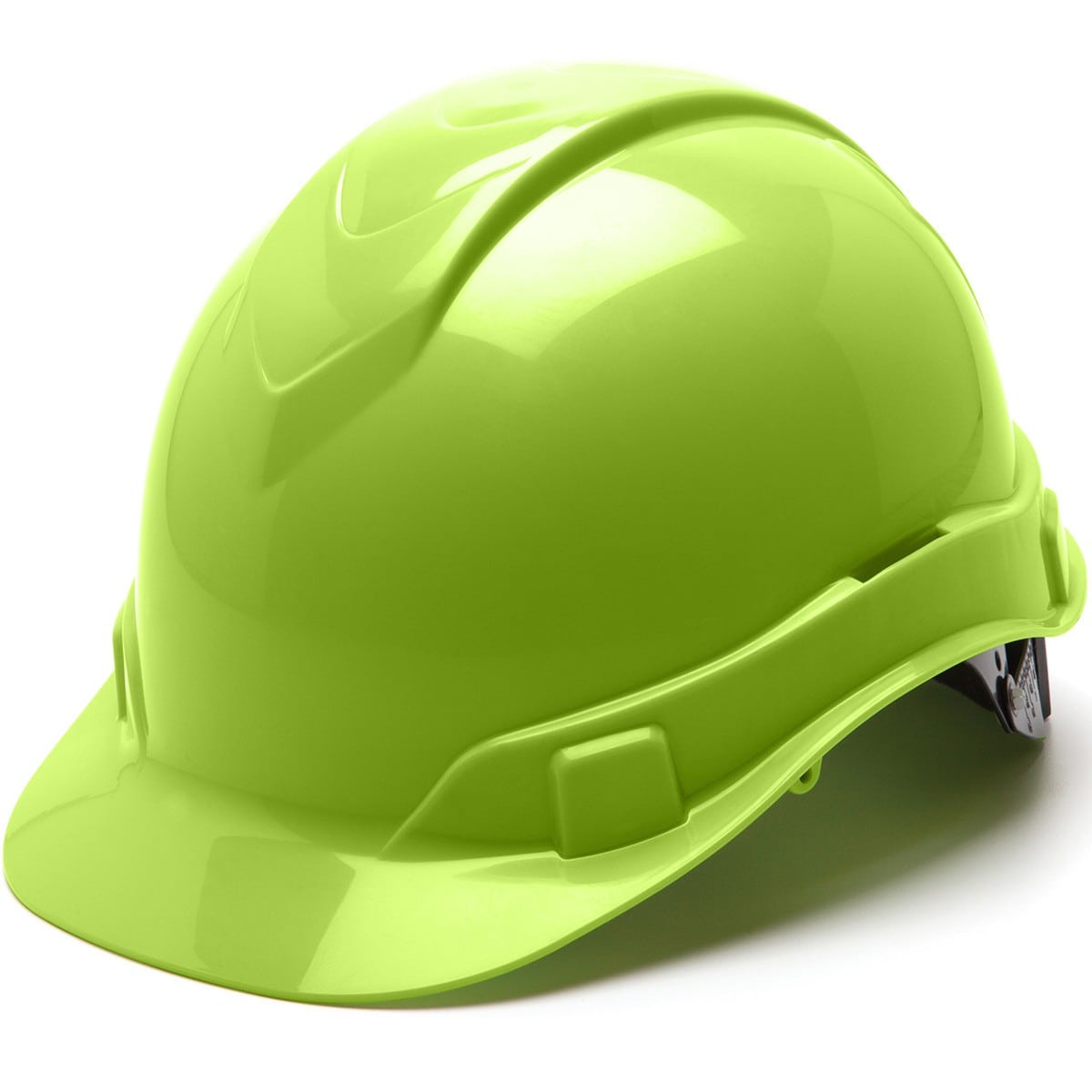
Hard hats must be worn when there is a potential for head injury from impacts, falling or flying objects, or electrical shock.
There are three classes of hard hat, based on the level of protection they provide from electrical hazards.
- Class G (General) are rated for 2,200 volts or less.
- Class E (Electrical) are rated for 20,000 volts or less.
- Class C (Conductive) do not offer electrical protection.
All hard hats used should be labeled as conforming to an ANSI standard.
Don’t forget the weather!
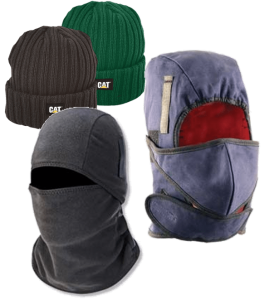
Cold weather can cause hypothermia and frost bite. Much of the heat lost from our body comes out of our head. If you need to work outside in cold weather, make sure you wear a hat.
In hot weather both heat exhaustion and heat stroke are possibilities. Hats with protection for the back of your neck are always good. The yellow bandanna is made with a product that can be soaked in water and provides cooling for several hours. The blue tie hat is made of a material that helps to keep people cool and is also fire resistant.
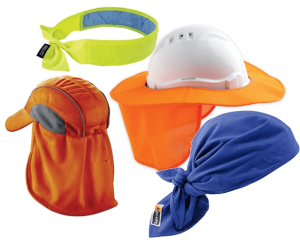
Hearing Protection

Hearing protection is required for employees who work in areas where where the noise level, averaged over 8 hours, is at or above 85 decibels. Anyone working in high noise areas will be provided with hearing protection to be worn during their job.
Employees working in high noise conditions are required to participate in the Hearing Loss Prevention Program (add link when up), which includes annual audiometric (hearing) exams, and annual training in accordance with WAC 296-817.
There are many different styles of hearing protection and there are a variety of levels of noise reduction or attenuation for each style. Refer to the Noise Exposure & Hearing Protection page for more information on this topic.
Eye Protection

An estimated 30,500 eye injuries occur each month and 90% of them could be prevented by using proper eye protection!
Eye protection must be worn in areas where there is:
- Flying objects
- Dust or particles in the air
- Chemicals
- Harmful light radiation (lasers, UV, IR)
- Potential for splashing bodily fluids or sewage
All eye protection intended to prevent injury from impact must be ANSI Z87.1 rated and should have side impact protection.
Goggles should be worn if there is the potential for splashing liquids.
When dealing with harmful light radiation, the eye protection selected must match the type and intensity of the light source.
Face shields can’t be used as eye protection in situations where splashing may occur and most face shields aren’t ANSI approved for impact protection. Safety glasses or goggles should be worn under face shields in most cases.
Face Protection

Face protection is usually used in addition to eye protection, it amplifies the amount of coverage received but doesn’t protect to the same degree that eye protection does and so shouldn’t be used instead of eye protection.
Face protection can be used to protect against radiation, chemical or biological splashes, and flying debris depending on the type selected. Unlike most other PPE, there are no specific regulations regarding the use of face protection.
Respiratory Protection
Most of the information found in this section is covered in the Respiratory Safety brochure and some information is covered in greater detail in the brochure.
Medical clearance and training is required before using a respirator of any kind and annual testing is necessary to ensure the respirator continues to fit the user.
Individuals may choose to use a respirator for additional comfort and protection. This falls under voluntary respirator use, it requires the individual to read and fill out the Information for Persons Voluntarily Using Respirators page. These individuals are not required to have medical clearance or annual fit testing, though it is recommended.
Respirators are used to either filter out contaminants found in some environments or to provide oxygen for environments that don’t have enough. Most of the respirators used at EWU are the filtering type.
Filtering respirators pass incoming air through some type of filtering system to remove or reduce the concentration of a contaminant. Most filtering respirators have different filters for different types of contaminants. It is important to know what needs to be filtered in order to use these respirators.
Oxygen supplying respirators provide fresh air to the user. The air is either supplied from a cylinder carried by the user (like with scuba gear) or is pumped from a clean area through a long hose to the user. Persons using cylinder supplied air have to be careful to return to a safe location before their cylinder runs out, and will need to be fit enough to carry the cylinder along with the rest of their protective gear. Hose supplied air can be dangerous if the hose becomes kinked or compressed so that air can no longer reach the user. Extra personnel are required to monitor the condition of the air that is being supplied to the respirator user and to monitor the hose as far as possible.
This video has basic instructions for putting on (donning), taking off (doffing) and checking the seal of a half-face respirator.
This video has basic instructions for donning, doffing and checking the seal of an N95 respirator.
Common Filtering Respirators
Filtering respirators CANNOT be used in low oxygen environments or when the contaminant concentration is above the NIOSH Immediately Dangerous to Life or Health (IDLH) level!
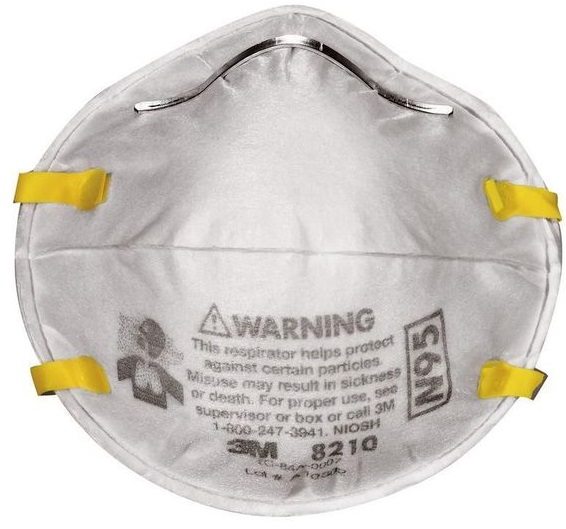
N95 masks, usually referred to as dust masks, are the most basic type of filtering respirator. They are disposable masks that are used in dusty areas and in healthcare facilities. They filter some small particles out of the air as it passes through the mask.
Half-face respirators filter air through disposable cartridges. There are a variety of different cartridges designed for different contaminant types. There are general HEPA filters that function similar to the N95 mask, with slightly better protection, as well as filters designed for different chemicals.
The different cartridges will need to be replaced according to manufacturer recommendations in order to ensure the user continues to be protected.
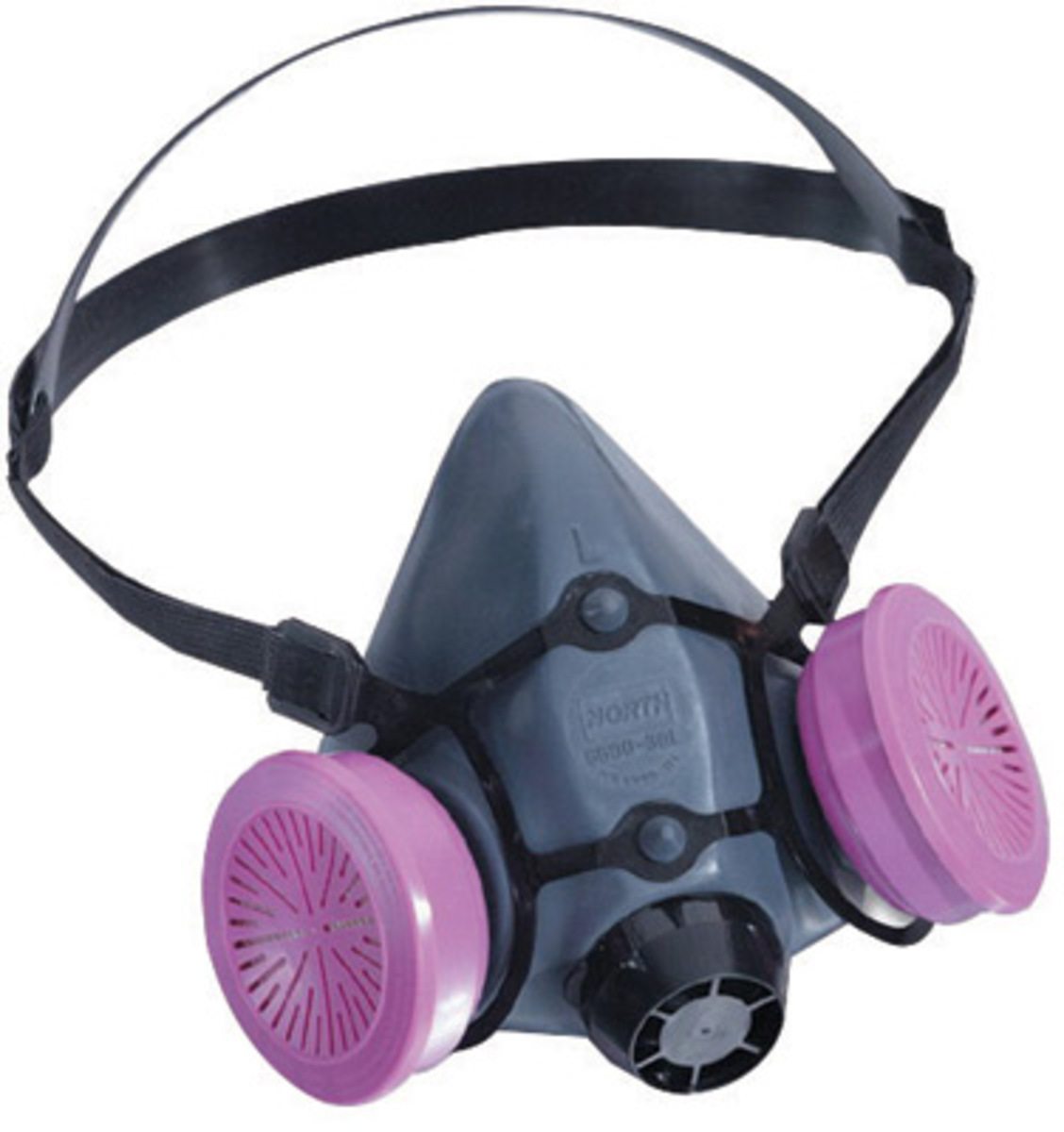
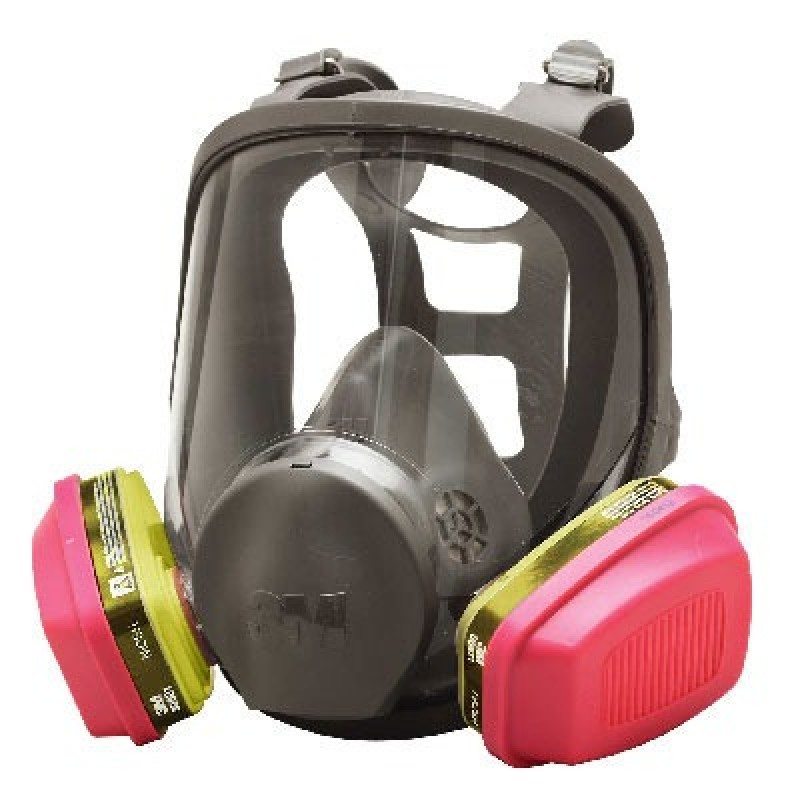
Full-face respirators function similarly to the half-face versions and often use the same cartridges. They provide more filtration than the half-face and offer some protection to the users eyes.
Persons who have issues with claustrophobia may be unable to use these respirators because they contain the entire face.
Powered Air Purifying Respirators (PAPR) are hoods that have air blown into them. The air is pulled through a filter, similar to the half-face and full-face respirators, by mechanical means and the filtered air is then pushed over the users face. They are useful for individuals who are medically unable to use other respirators and for people with facial hair. The amount of filtration they offer is between the half-face and full-face.
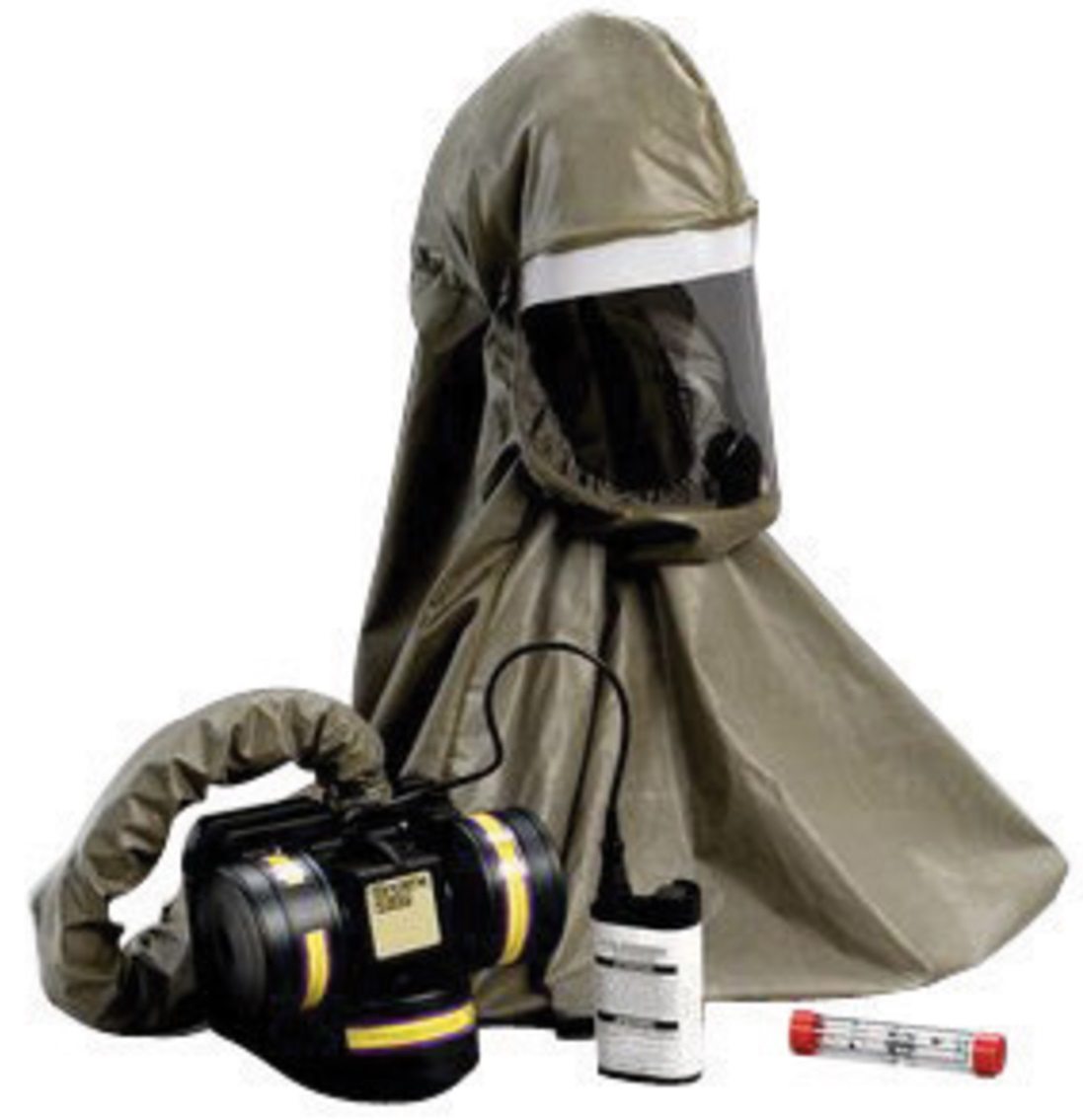
Torso/Body Protection
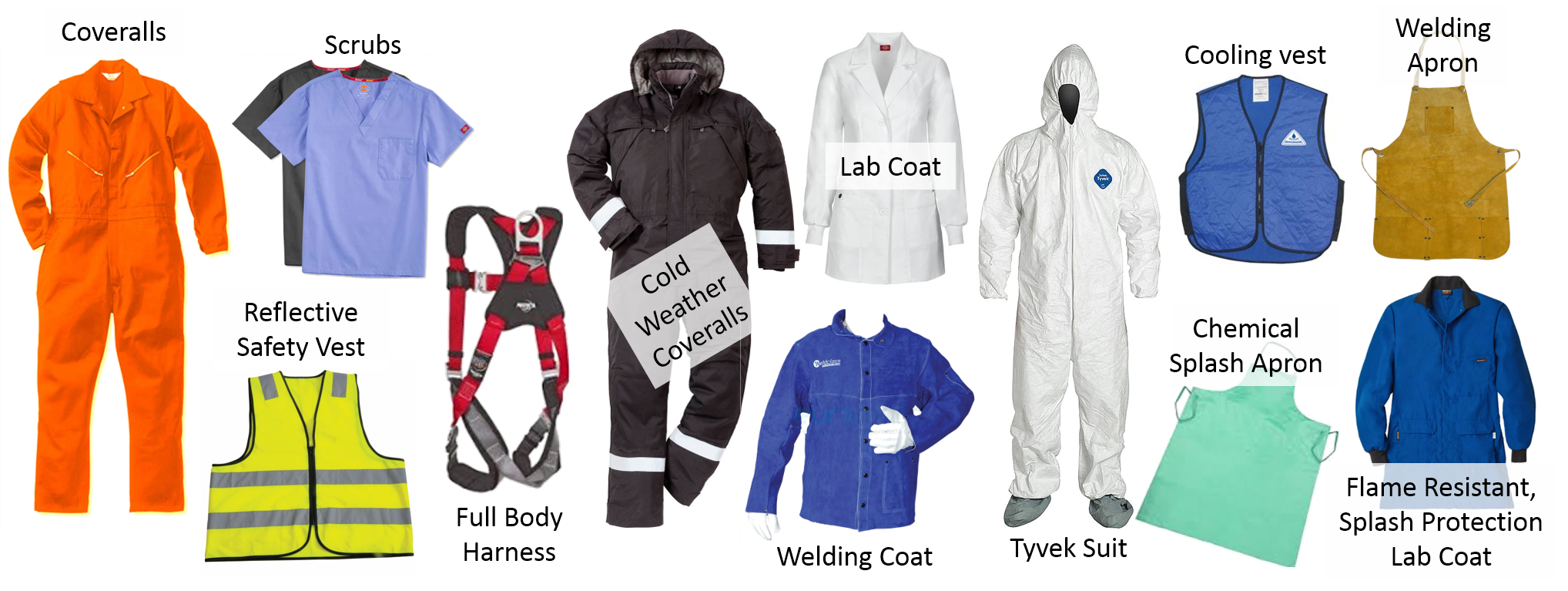
There is torso and body PPE designed for a wide range of conditions. Proper consideration of the kind of hazards that may be encountered while working is important before determining exactly what type of PPE is needed for a job.
If there is the possibility that something may splash onto your body or clothes, some sort of torso/body covering should be used. The type of covering will depend on what could splash. Paint or cleaning supplies might require basic coveralls whereas flammable chemicals might require a special lab coat.
When working outside, reflective gear may be necessary to ensure everyone can see you. Weather is another consideration for outdoor work. Cooling vests or shirts with ventilation panels can be helpful to prevent heat related medical issues. In cold weather, multiple layers may be necessary and it is important to have an outer layer that will repel moisture.
When working off the ground a full body harness may be required. Remember that having just the harness will not protect you, the harness must be attached to a certified connection point using a lanyard. See the Fall Protection & Working from Heights page for more information on this topic.
One important consideration when it comes to body covering PPE is the potential for, or presence of, fire. Care should be taken when working around open flames, or with items that have the potential to catch fire. Many synthetic fibers that clothes are made of melt when exposed to flames.
Hand Protection

When selecting the type of gloves necessary for a task, consider the following things:
- What type of hazard(s) are the gloves protecting against?
- How much dexterity is required for the task?
- How long (or how frequently) will the gloves need to be worn?
It’s important to make sure the gloves selected are comfortable enough that people will wear them, and that they fit well so they don’t make the task more dangerous.
When selecting gloves for use with chemicals, the type of chemical being used must be taken into account. There is no glove that protects well against every type of chemical. The University of Maryland Glove Chemical Resistance Guide (linked below) has chemical breakthrough times for different chemicals and glove materials.
Foot & Leg Protection

Special shoes or boots may be necessary depending on the hazards present in the workplace. Work footwear should always be close-toed.
Anytime there is the potential for heavy objects to drop or roll onto the feet, a boot with at least toe protection and possibly a metatarsal guard should be worn. There are a number of different options for toe guarding and the specific hazards present will help determine the type that is required. Shoes or boots may also need to have piercing protection in the sole if there is potential for stepping on sharp objects. All safety shoes and boots used on campus must be ANSI compliant.
Chemically resistant shoes or boots should be work for the clean-up of chemical spills.
Weather should be considered when picking shoes/boots. During the summer it may be necessary to have shoes or boots with better ventilation to prevent overheating, whereas in the winter waterproof shoes or boots with insulation may be needed.
Regardless of the weather outside, moisture wicking socks are a good idea. They will keep water from accumulating around the feet keeping them cooler in the summer, warmer in the winter, and less likely to have fungal growth year round.
Ice cleats are very useful if you need to walk around outside during the winter.
Special leg coverings may be needed depending on work activities.



